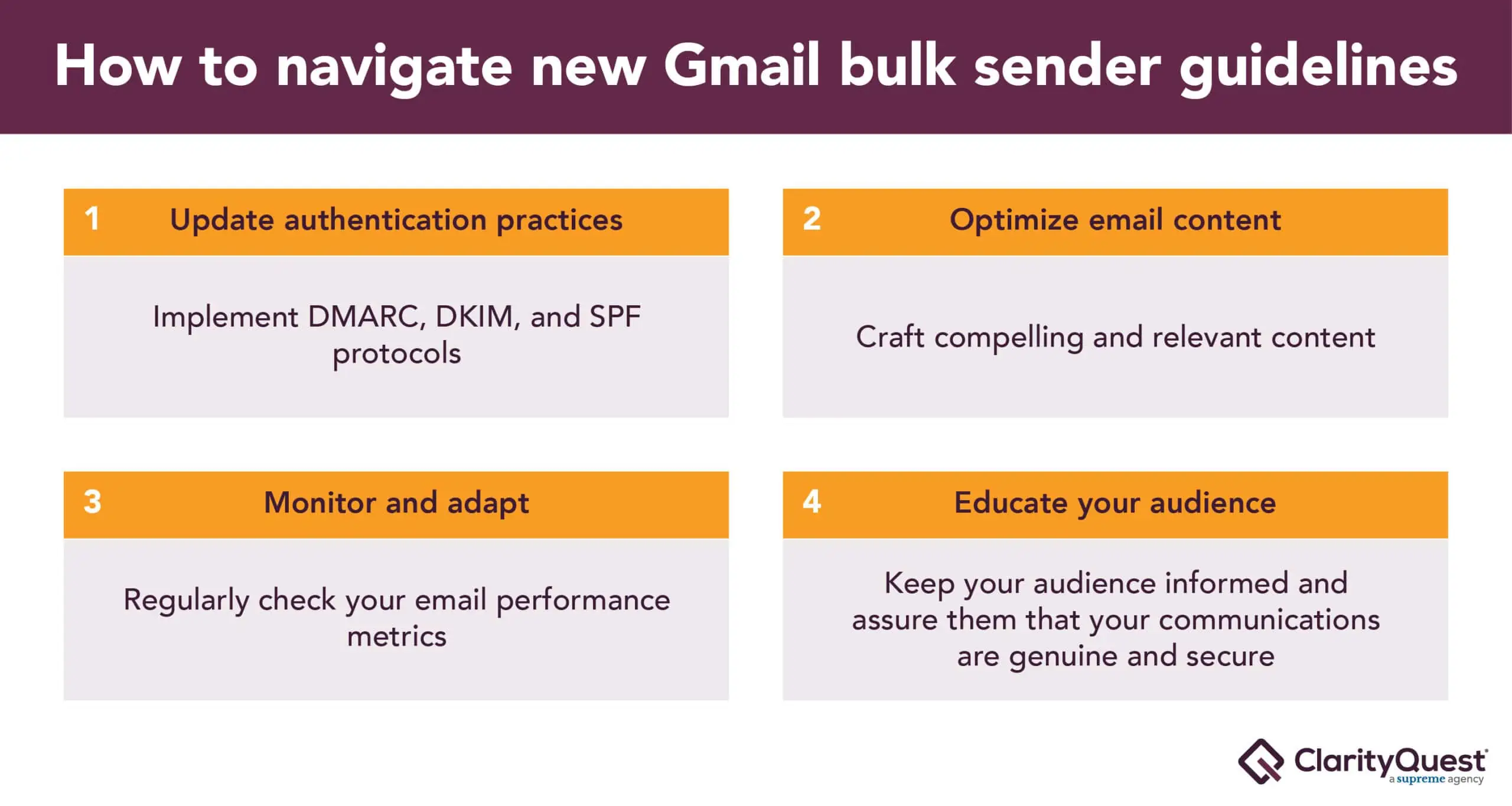Recently, Google announced significant changes to Gmail bulk sender guidelines. For biotech, medical device and healthcare software marketing, adapting to these changes is critical for sustained success in reaching each respective target audience.
Understanding the change
Google’s move towards enhancing security and authentication mechanisms within Gmail is a response to the growing challenges of phishing attacks and email spoofing. These changes aim to create a safer and more reliable email environment, ensuring users receive genuine and secure communications.
While this is a positive step for user protection, it also necessitates a strategic adjustment for marketers in the health tech, biotech, and med device industries.
Key changes and impacts
1. Authentication protocols
Google’s new protocols may affect the way emails are authenticated. Marketers should prioritize implementing industry-standard email authentication mechanisms such as DMARC (Domain-based Message Authentication, Reporting & Conformance) to ensure Gmail recognizes and trusts their emails.
Google recommends following these best practices.
2. Wanted emails
Google will enforce a spam rate threshold that senders must stay under to ensure recipients do not receive too many unwanted messages.
Messages may not be delivered from senders whose emails are frequented marked as spam and fall exceed a “clear spam threshold” rate of 0.3% of messages sent, as measured by Google’s Postmaster Tools.
3. Spam protection updates
Gmail’s enhanced spam protection may filter out emails that do not meet the new authentication standards. Marketers must focus on crafting clear, relevant, and authentic content to minimize the risk of their communications being flagged as spam.
Additionally, Google will require that large senders (emailers who send more than 5,000 messages daily) give Gmail recipients the ability to unsubscribe from commercial email in one click. Unsubscription requests must be processed within two days.
4. User engagement metrics
With these changes, user engagement metrics may become even more critical. Marketers should monitor metrics such as open rates, click-to-open rates (CTOR), and overall engagement to gauge the effectiveness of their email campaigns within the evolving Gmail environment.
Preparing for the change
1. Update authentication practices
Ensure that your email authentication practices align with industry standards. Implementing DMARC, DKIM (DomainKeys Identified Mail), and SPF (Sender Policy Framework) protocols can enhance the authenticity of your emails, improving their chances of reaching the intended audience. These protocols can also help in preventing phishing attacks and email spoofing.
By adhering to industry standards through these protocols, marketers can establish trust with Internet Service Providers (ISPs) and email clients, significantly improving the likelihood that their emails reach the intended recipients’ inboxes rather than being flagged as spam.
2. Optimize email content
Craft compelling and relevant content that resonates with your audience. Avoid common spam triggers and focus on providing value through personalized, informative, and engaging messages. This aligns with Gmail’s new security measures and enhances the overall user experience.
3. Monitor and adapt
Regularly monitor your email performance metrics and be prepared to adapt your strategies based on the feedback from Gmail’s security and spam protection systems. This proactive approach ensures that you stay ahead of potential issues and maintain a positive sender reputation.
4. Educate your audience
Keep your audience informed about these changes and assure them that your communications are genuine and secure. Consider including brief explanations in your emails about the steps you’ve taken to adhere to the new security measures, fostering trust with your recipients.
Adaptation is (still) the name of the game
As Google strengthens Gmail bulk sender guidelines, health tech, biotech, and medical device marketers must proactively adapt to ensure the continued effectiveness of their email campaigns.
By embracing these changes, optimizing authentication practices, and delivering valuable content, marketers can navigate the dynamic digital landscape and build stronger connections with their target audience. Stay informed, stay authentic, and stay ahead.



